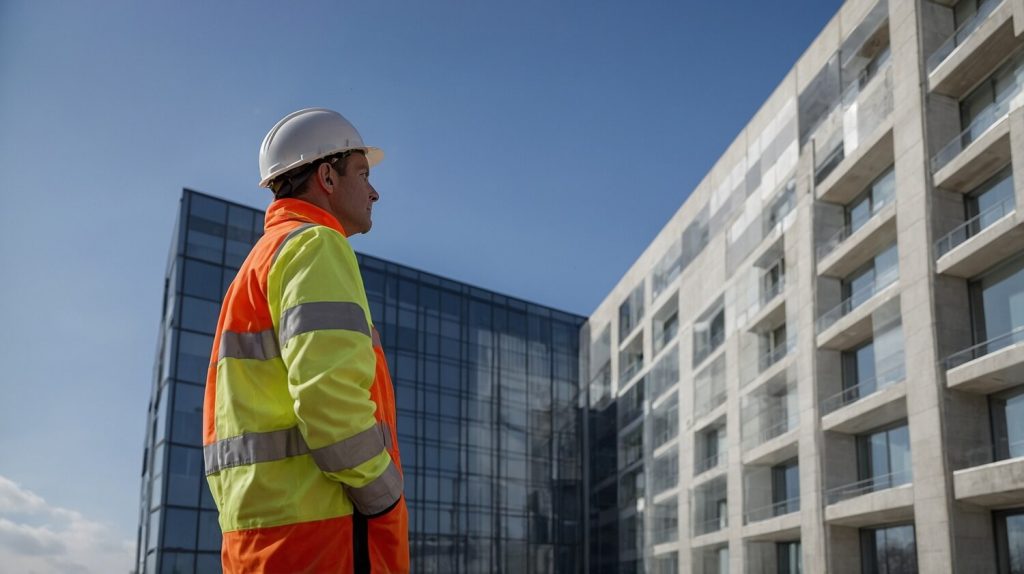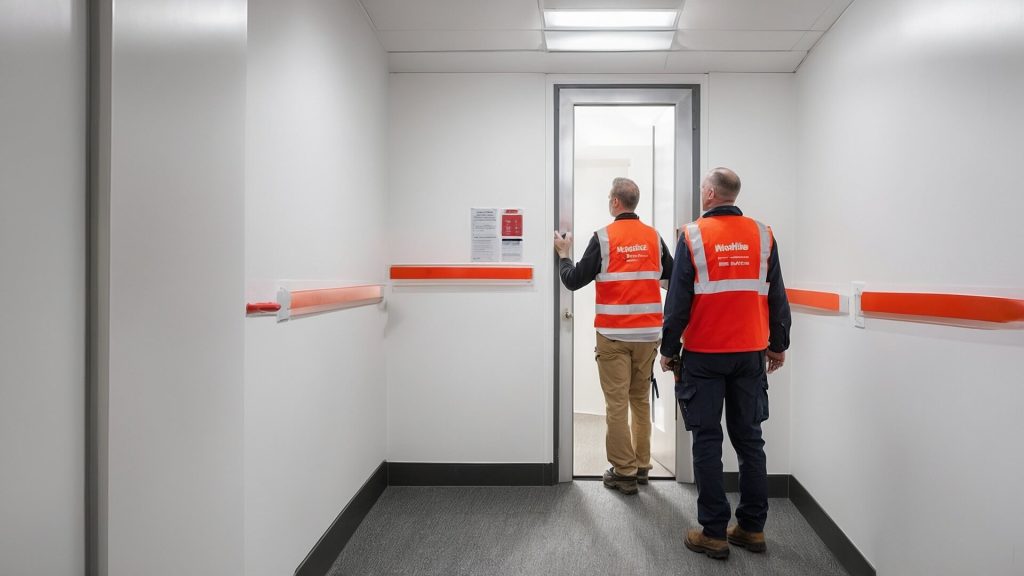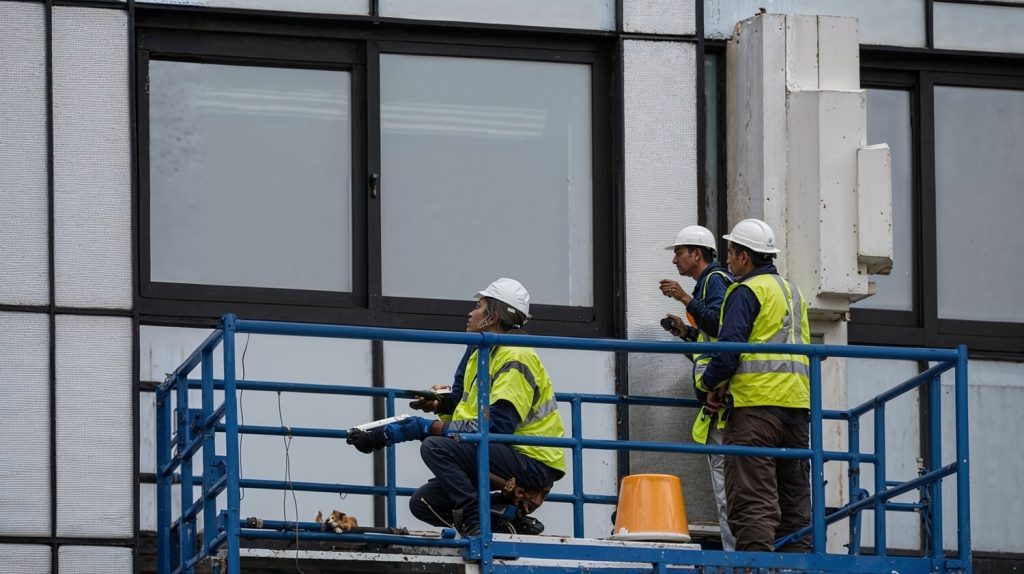We will be closed from 23rd December 2025 and will be back open on Monday, 5th January 2026!
Merry Christmas and Happy New Year!

Fire doors are a vital component of a building’s overall safety, designed to limit the spread of fire and smoke and protect escape routes for occupants. In the UK, fire door regulations have been updated and improved following the Grenfell Tower inquiry, which exposed critical failures in fire door performance and maintenance. For property managers, building owners and safety professionals, staying current with these regulations is essential to ensure legal compliance and protect building occupants.
The Fire Safety (England) Regulations 2022, effective from January 2023, introduced significant duties for responsible persons in multi-occupied residential buildings with storeys over 11 metres. Quarterly checks of all fire doors in the building’s common parts are now a legal requirement, including inspections of door closers and intumescent seals. Annual checks of flat entrance doors, on a best endeavour basis, must also be undertaken. These regulations reinforce the importance of maintaining fire doors in good repair and efficient working order.
Responsible persons, which include building owners and managers, must also provide residents with information on the importance of fire doors to a building’s fire safety. This helps residents understand the role of fire doors in limiting the spread of smoke and toxic gases and encourages cooperation during inspections.
Fire doors are a critical component of a building’s passive fire protection system. They are designed to maintain a fire resistance rating suitable for their location, protecting corridors, stairwells, boiler rooms and other common areas. The door leaf, intumescent seals and door closers must all be in good condition, and regular maintenance is vital to ensure doors perform their important role in the event of a fire.
The British Standard and Approved Document B set out clear requirements for fire door construction, installation and maintenance. Regular inspections of fire doors, including quarterly checks in blocks of flats, help to identify damage, misalignment or missing self-closing devices that could compromise the building’s fire protection system.

Maintaining fire doors involves more than just inspections. Building owners should implement a programme of regular maintenance, repair and replacement where necessary, ensuring fire doors remain in good working order and continue to provide adequate protection. Fire risk assessments must consider the performance of fire doors, including flat entrance doors, which are now explicitly in scope under the Fire Safety Act 2021.
For commercial buildings and residential blocks, it is crucial that escape routes remain clear and that fire doors are correctly installed and maintained as part of the building’s fire safety measures. Failure to comply with fire safety regulations UK can result in legal action under the Fire Safety Order and leave building occupants at serious risk.

The regulatory landscape is continuing to evolve, with updates following Grenfell Tower and subsequent Home Office guidance. Building owners and managers should stay informed on fire safety regulations, maintain comprehensive records of inspections and engage trained fire door inspectors when necessary. Regular training, adherence to safety standards and annual checks of all flat entrance doors help ensure the building’s fire safety system remains effective.
Fire door safety is not optional. By prioritising inspections, maintenance and compliance, responsible persons fulfil their legal obligation and protect both residents and property. Keeping fire doors in good order is an investment in safety that safeguards lives and limits fire risk across the building’s common parts and private dwellings.
While it might seem costly, investing in a high-quality fire door is crucial for safety and compliance with fire door regulations. These doors are designed to contain fires, protect escape routes, and minimize damage. Ultimately, an expensive fire door can save lives and reduce potential losses in case of a fire.
Yes, fire door regulations are expected to undergo changes in 2025 as part of ongoing efforts to enhance fire safety standards. The specifics of these changes will likely focus on improving performance criteria, maintenance requirements, and compliance measures to ensure that fire doors provide optimal protection in case of a fire. It is essential for property owners and managers to stay informed about these developments to ensure compliance and safety.
Where can I find official fire door guidance for England? You can find official fire door guidance for England on the UK government’s website, specifically the Ministry of Housing, Communities & Local Government (MHCLG) page. Additionally, the British Standards Institution (BSI) provides relevant standards and guidance documents that outline the requirements and best practices for fire doors. Local fire safety authorities may also have resources available for more specific inquiries.